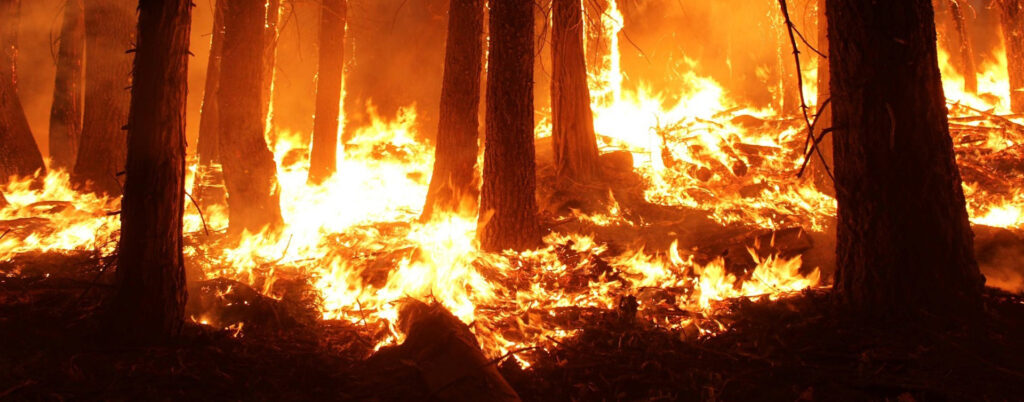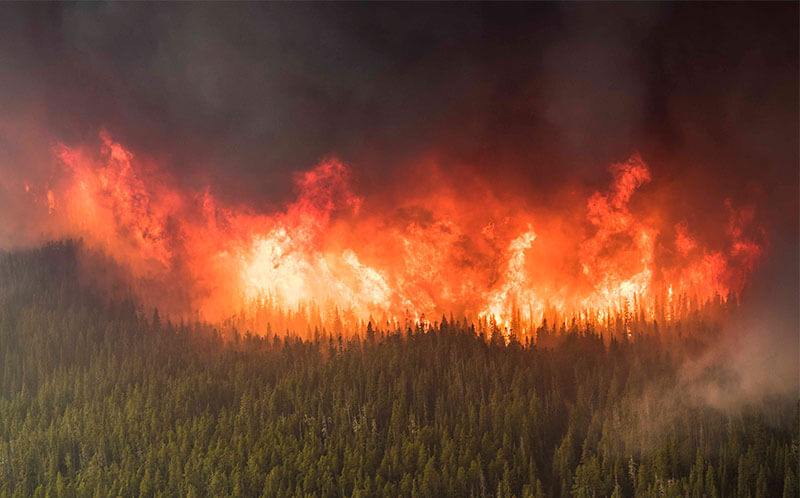By Sonya Odsen
Have you ever walked through a recently burned forest? Each step kicks up clouds of ash and soot, and the air smells a bit like a barbeque food truck. By the end of the day, clothes are stained black and faces are smudged with dark fingerprints. Simple nose-blowing will have unusual results for the next few days, and the smell of campfire lingers.
Fire is an intense process that does more than kill trees and plants. Burning changes the chemical properties of wood, leaf litter, and the rich soils that are the foundation of many forests. Instead of looking up to the treetops, for this Wildfire Story we will turn our attention to the charred, blackened soil beneath our feet.
Nutrients Under Fire
Any soil scientist will tell you that soil is teeming with life (and will quickly correct you if you refer to it as “dirt”). Soil develops over many years as plants grow, die, and decompose, with invertebrates and microorganisms breaking them down over time. Leaf litter, decaying wood, partially and fully decomposed matter make up the top layer of soils, and nutrients are slowly cycled through it as they are released through decomposition and taken up by growing plants.
So what happens to the soil when a forest catches fire? As those clouds of ash wafting up from under your feet can attest, soils are not immune to the effects of fire. Quite the opposite—and how fire affects soil can have a strong impact on how the forest grows back.
Break it Down, Burn it Up
Like many things, organic matter in soils starts to break down when the heat gets turned up. At first, the water in the soil vaporizes when the soil heats up to 100°C, but that’s only the beginning. As temperatures continue to increase, chunks of decaying wood in the soil break down, and the organic matter in the soil begins to combust at 500–600°C. The flames that are produced drive temperatures up even higher, up to 1,500°C!

As temperatures increase, soil nutrients like nitrogen and phosphorus undergo chemical reactions. Some of these reactions cause these and other nutrients to be released into the atmosphere as gas, which reduces the amount of nutrients available in the soil.
However, other chemical reactions can increase the nutrients available in the soil. Not all nitrogen in the soil is released as gas—some of it reacts to form ammonium, a form of nitrogen that is easily taken up by plants. Ash on the soil surface likewise contains high amounts of phosphorus in a form that plants can take up.
The intensity of a fire affects whether the burned soils have more, less, or about the same nutrient levels that they had before the fire. An extremely hot fire will burn up a lot of the organic matter in the soil, if not all of it, and is more likely to cause overall nutrient loss. A lower-temperature fire, in contrast, may increase soil fertility by breaking down organic matter without causing most nutrients to be lost into the atmosphere (e.g., as nitrogen gas).
The nature of a fire, and the pre-fire conditions, can also create situations where the soil becomes impermeable to water. These situations can lead to serious environmental damage when rainwater pools on the soil instead of soaking into it. Not only does it keep water away from the roots of growing plants, but it can also lead to severe erosion as pooling water forms rills, washing the soil away with it as it moves downhill.

More Than Meets the Eye
The charred remains of trees left behind by a forest fire are a dramatic sight, but they are only one part of forest ecosystems that are affected by fire. When we look down to the ground, it becomes clear that the nature of fire—how hot it burns and whether it burns along the ground—affects the makeup of soils after the flames subside.
In turn, these burned soils may be very fertile, making it easy for plants to re-colonize and begin the cycle anew. Other soils, perhaps those subjected to very intense temperatures, may lose a lot of nutrients and even become waterproof—difficult growing conditions, to say the least.
One thing is clear: fire leaves a mark on the landscape in many different ways. It affects soils, vegetation, and wildlife, and the more we learn about it, the more we can see how all these different components and processes affect one another.
References:
DeBano, L. F. 1990. The effect of fire on soil properties. SoLo: A Guide to Soil Quality Monitoring for Long Term Ecosystem Sustainability on Northern Region National Forests. Rocky Mountain Research Station, U.S. Forest Service. https://forest.moscowfsl.wsu.edu/smp/solo/documents/GTRs/INT_280/DeBano_INT-280.php
Certini, G. 2005. Effects of fire on properties of forest soils: a review. Oecologia 143:1–10. http://www.jstor.org/stable/20062214?seq=1#page_scan_tab_contents
Sonya Odsen is an Ecologist and Science Communicator with a background in boreal ecology and conservation. She is a regular writer for Landscapes in Motion and is part of the Outreach and Engagement Team for the project.
Every member of our team sees the world a little bit differently, which is one of the strengths of this project. Each blog posted to the Landscapes in Motion website represents the personal experiences, perspectives, and opinions of the author(s) and not of the team, project, or Healthy Landscapes Program.







